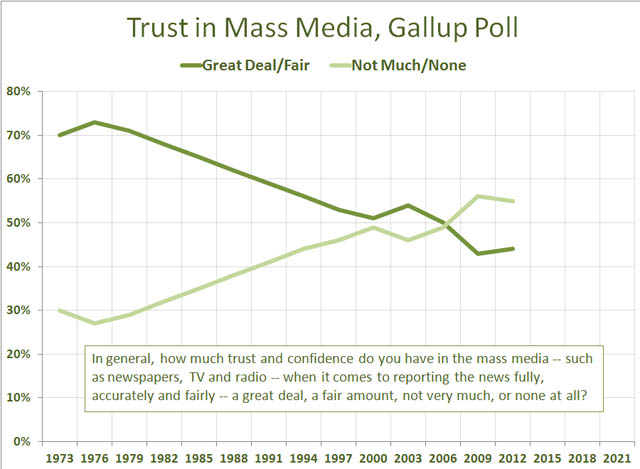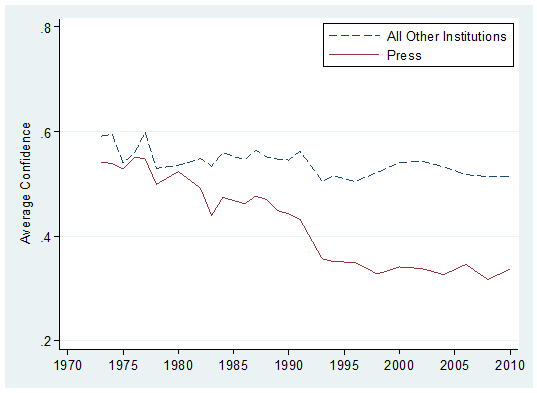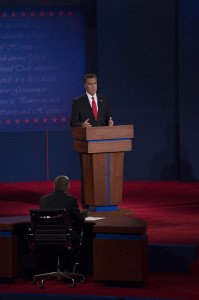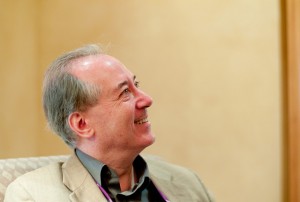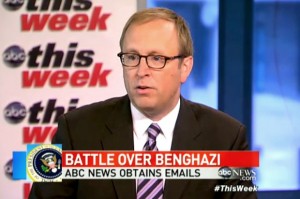No one knew if it would work when the Times started to charge regular visitors to its site. There were no experts. But there was a reasonably well-informed debate among people who followed it closely. Here is what they said then.
In a recent speech to the Columbia University business school graduates, the new CEO of the New York Times, Mark Thompson, said this:
Two years ago The Times launched a new digital pay model, essentially asking users of The Times on digital to do what more than a million print users of the newspaper were already doing, which is to pay a regular subscription in return for extensive access to our journalism.
The consensus among the experts was that it wouldn’t work, was foolhardy in fact and not needed. People just weren’t prepared to pay for high quality content on the internet and, besides, wasn’t digital advertising enough – wouldn’t it grow until, just as with print advertising in the golden age of physical newspapers, it alone was enough to support America’s newsrooms?
The part I put in bold is bad information. In my view it should not have been passed along by Mark Thompson to the graduates of one of the world’s leading business schools. It is bad information in four or five ways, which I will describe, but before I do that I have to admit that there is one sense in which Thompson’s “consensus among the experts” is plausibly stated.
If he was using the term “experts” with pure derision, as in “people speaking LOUDLY with all of the confidence but none of the knowledge…” then, YES, there were such people. Definitely. Yelling (reflexively) at the New York Times: Readers won’t pay for news on the internet! Because… because they won’t!
So if in citing “the experts” Thompson was speaking sarcastically about this sort of display, he is unquestionably right: some said that, and probably chuckled among themselves at the cluelessness of the Times. But since when is the opinion of internet yahoos relevant to decision-making at a cultural powerhouse like the New York Times? If the business school students were handed this case–and it is a good case for them–how much time would they spend on propositions like, “you can’t charge for news on the internet because you can’t” and “digital ads will save the day.” Five minutes, maybe?
For all other senses of the term “expert,” Thompson’s statement about the consensus opinion is distorted or just wrong. Bad information, as I will try to show.
Overview: Two years ago The New York Times launched a new digital pay model: The Meter. Along with the people I will be quoting, I had a professional interest in the matter. The sustainability puzzle in the press is the number one problem in journalism at the moment. Therefore The Meter was a big deal for everyone who followed the fortunes of the news business. Mark Thompson was Director General of the BBC at the time. Chairman Arthur Sulzberger, Jr., CEO Janet Robinson, editor Bill Keller and digital publisher Martin Nisenholtz were the executives in charge at the Times.
The Meter is a leaky paywall. You get a certain number of articles free per month; after that you pay. It’s an attempt to capture revenue from the heaviest users and allow casual visitors to come by freely. With this mixed system you try try to retain the advantages of the open web and gain a new revenue stream. Setting the number of free views, and the cost of a subscription can only be done experimentally: pick a number, see what happens, adjust to that.
The metered system wasn’t entirely new–the Financial Times already had one working–but trying it with a general interest news product like the Times was different. Certain lessons from earlier attempts to charge–especially Times Select– seem to have been learned, but would that make a difference? Impossible to say.
1. There were no experts in what would happen when the New York Times flipped the switch on its pay meter in March, 2011: inside or outside the building. You could try to bring knowledge to bear. (The Times spent $40 million researching it.) You could not say what the users would do with enough precision to make a firm call.
Still, a reasonably well-informed debate about the wisdom of the Times move took place among reporters in the specialist press, bloggers who kept track of paywall news, media writers and journalism professors, working journalists who understood the stakes, and other, perhaps harder-to-classify observers who tried to master the details of the various pay and meter plans and grasp how they work. These people cared how the big experiment of 2011 turned out. Some of them speculated about likely outcomes. Some put pen to paper and tried to calculate the payoff.
2. There was no consensus. People predicted failure for The Meter. Other people stood and applauded the Times for finally doing it. Others were primarily in a mood of uncertainty: they hedged. (I will bring you all these points of view.) To its credit, the team at the Times went ahead despite this confusion. And the Meter is now an estimated $100 million revenue stream. Paid digital subscribers: around 700,000. When Thompson took the podium at Columbia, there was no need to create a cartoon debate for the Times decision-making to stand out. The real story is bold enough.
3. The median view or center line in the debate was not, “It will never work.” If there was no consensus but a range of views, we can still try to identify the center line, where the sample is divided in half. Here’s how I would summarize it.
This is a big gamble. It might work or it might not. The Times meter seems to be intelligently designed, with an awareness of most of the risks. Whether it will pay off cannot be known until the numbers come in– not just how many sign up, but what The Meter does to advertising rates, what it costs to market the product, whether it slows the erosion in print subscribers.
4. Opinion within the Times was split along similar lines. Because no one knew what the users would do. This split was reported in the press at the time. (I will bring it to you.) That Thompson declines to menton it is… odd.
5. No one thought digital advertising alone would solve the problem. Thompson is simply wrong when he paraphrases the experts:
Wasn’t digital advertising enough – wouldn’t it grow until, just as with print advertising in the golden age of physical newspapers, it alone was enough to support America’s newsrooms?
By 2010, when the Times announced The Meter, it was well known (again, to anyone following the story but maybe not to assorted internet yahoos) that digital advertising was not about to replace lost revenues for the print press. Knowing this fact was basic to participating in the debate at all.
When I say Thompson gave bad information to the graduates of the Columbia Business School–and he did–I don’t expect you to take my word for it. I am going to link you to the evidence for my propositions 1 to 5 above. Interspersed with quotations from 2010 and 2011, I bring you commentary from people who were following it even more closely that I was.
Don’t have time for those details? Then just click and browse these two links: Nieman Lab’s round-up on Dec, 13, 2010 and a similar forum in March 17, 2011. Josh Benton, director of the Lab and one of the people I sought recollections from, comments on the 2010 round-up:
To paraphrase each, ranked roughly in order of pro- to anti-:
Brill: It makes a lot of sense.
Kennedy: A smart and nuanced approach.
Overholser: It seems like an informed attempt.
Webb: I agree with the paywall, but subscribers will want fewer ads.
Fry: It’s too restrictive in some ways and too loose in others.
Langeveld: It’s confusing, but they’ll tighten it over time.
Cohn: Happy to see them try, not very optimistic.
Stray: It won’t change the NYT’s revenue in an earth-shaking way.
Dash: It’s too complicated a setup.
McCarthy: It’s short-sighted and doomed.
Buttry: It’s ridiculous on multiple levels.
These are all smart people. Some thought it was a good idea, some didn’t.
You can see the same spread in this weekly review post by Mark Coddington. (“There was no consensus of initial opinion about the plan…”) Benton’s reflections:
My general thought at the time was happiness that someone was taking the paywall leap — because we’d spend all of 2008/09/10 talking about paywalls and their prospects, usually in ideological ways, but we had precious little data on what worked and what doesn’t. My expectation was that it would do better than TimesSelect had done —
— because people were more willing to pay for content in 2011 than they were in 2005
— because the value proposition was more clear (all news content vs. just columnist and a grab bag of other stuff)
— because the Times’ digital presence, always good, had kept improving over that span
— because the web had grown so much outside the United States among elite potential Times digital subscribers
but that it was unclear whether the growth curve would flatten out as it did for TimesSelect, and if so, at what level it would flatten out.
That’s what the debate was about: the nitty gritty of such projections. You can hear Josh wrestling with those details here. Why couldn’t Mark Thompson do the same?
Let’s listen to some other voices, keeping in mind Thompson’s capsule summary: The consensus among the experts was that it wouldn’t work, was foolhardy in fact and not needed…
Alan Mutter, Reflections of a Newsosaur: NYT.Com pay scheme can succeed, but…
The long-awaited, much-delayed digital pay scheme at the New York Times should work just fine, but that doesn’t mean it can be replicated successfully in other markets. Accordingly, other publishers should proceed with caution.
Rick Edmonds, Poynter: New York Times paywall could increase circulation and ad revenue while protecting print
The New York Times new metered paywall corrects the mistake it made in its first foray into charging for online content — blocking search. At the same time, the paywall represents a calculated risk on maintaining and ultimately growing digital ad revenues.
Megan McCarthy, at the time editor of Mediagazer, Nieman roundtable, Dec. 2010.
I think the New York Times’s paywall is short-sighted and doomed. If they want to make the Times more valuable, they need to focus on changing their model of digital advertising to be as profitable as their print side. The Times has the clout to help Madison Avenue realize the value of online advertising. I’m not sure why they’d rather deal with the intricacies of custom subscriptions and meters instead of charging brands and agencies which hold much more money and can get much more value (exposure) from the Times in return.
Ken Doctor, Newsonomics and Nieman Lab:
March 14, 2011, NYT’s good timing on pay launch, amid news chaos.
Charging for digital news is no panacea. It’s a platform for a growth, and the beginning of a new business model. Most newspaper company CEOs have done the math, and with the current trajectory of print ad decline, modest digital ad growth and no digital circulation money, they have no hope of sustaining their businesses into 2015. That’s a bleak, but fair, conclusion.
So, as we approach the proliferation of pay models, consider the Times’ and other moves as getting up on a bicycle and learning to ride it. For 15 years, newspaper companies have been careening around on unicycles, trying to make digital ad revenue, in and of itself and with too little attention to core readers, work. Now, they are trading in those unicycles for bicycles. 2011 is the year of training wheels, before the tough road work — tablet-focused product renewal — consumes their attention.
March 17, 2011, The Newsonomics of The New York Times’ pay fence
It’s a high price, a gamble, and a big hedge — see Test 5 below — against print subscribers migrating too quickly to the tablet. Since it is not charging print subs, it’s going to be an uphill battle to get non-print people to pay a minimum of $195 a year for something that was free, and it eschews conventional wisdom that $9.95 a month is a consumer limit on many digital items. The lack of an annual offer is glaring, and makes it far less friendly to expense accounts for business readers.
Though the FT and the Wall Street Journal have long operated successful pay models, the Times’ leap is a big one: The Times isn’t mainly a business newspaper. If it can succeed charging readers for “general news,” that’s a milestone for newspapers around the world. Most fundamentally, it adds a second leg — digital circulation revenue — to the new business model for newspaper companies. Fifteen years into the Internet, they’ve proven to themselves that digital advertising money alone won’t sustain their newsrooms in the years ahead, as print continues its inevitable decline
Ryan Chittum, Columbia Journalism Review: The New York Times Paywall Looks Good.
The New York Times paywall is here, and it’s about time. Don’t ask me why it took so long and why it cost $40 million to build, the point is after a decade and a half of giving away its expensive journalism online, the Times is saying it’s worth something: Pay us, please.
Chittum has continued to follow the paywall debate with intensity, as you can see here and here.
Joseph Tartakoff, paidContent.org: How Much Revenue Can The New York Times Paywall Generate?
We believe at least 500,000 people (or more than 10 percent of those heavy users) may be willing to pay up — and here’s how we get to that number. TimesSelect, the 2007 initiative that charged online-only readers $7.95 a month to accessNYTimes‘ columnists and some original content attracted 227,000 paid subscribers, or about 1.17 percent of the 13 million people who were reading NYTimes.com at the time.
If that same percentage agrees to pay for the new digital subscriptions, that would amount to about 527,000 subscribers in the U.S. alone. The minimum price of $15 for NYTimes.com plus smartphone access would generate about $100 million in additional annual revenue for the newspaper. A blend of subscriptions would push sales higher. And, the number of subscribers could be significantly greater, as well, considering that a higher percentage of people might be willing to pay for all of the Times‘ digital content [rather] than for just a piece of it — even though the price is higher too.
Staci Kramer, paidContent.org: The NYT Pay Plan’s Most Dangerous Foe: Perception.
For all this research and all the effort, the digital subscription space is a work in progress and this particular plan, is still experimental. Nothing is frozen in place. Prices can change. Plans can change. Consumer behavior in research and reality may not match. The Times invested tens of millions ($40-to-$50 million, according to Bloomberg) to build the system to be as flexible as possible, including the ability to allow universal access for major news events. Sulzberger and company need to stand fast enough to see if it works — TimesSelect lasted for two years — and be nimble enough to fix what doesn’t.
Along with Ken Doctor (quoted above) Staci Kramer of paidcontent.org was probably the closest student of the Times paywall. She did the kind of reporting that tries to nail down every detail, so I especially wanted to know what she thought:
I think Mark Thompson is very bright but he’s wrong about the “expert concensus,” particularly on his last two points.
The majority of knowledgeable observers, industry analysts and insiders have known for years [that] digital advertising alone wouldn’t be enough and that just as is the case with print, which relies on advertising and subscriptions, multiple revenue streams would be needed. Ditto for relying only on subscriptions to make up the difference during/after the print-digital transition. I also recognized — and contended — early on that making full online access a value-add for print subscribers versus charging extra for it was needed to keep that revenue stream healthy.
As options to reach news and info have grown — smartphones, tablets, smart TV, etc — so have the opportunities for subscriptions (cross-platform access as a lure), advertising, sponsorships, content licensing (NYT Crosswrods, for example), ebooks and more. The TimesCenter provides a steady stream of revenue from tickets for NYT events as well as fees from outside conferences or events.
(Even The Guardian, the champion of open-access web news, charges for apps and has been working on additional revenue streams.)
Many have consistently opposed charging for access to online news, particularly switching existing ad-supported sites to subscription for all or some access. In the case of the Times, the biggest argument centered on loss of influence when TimesSelect made opinions and columnists subscription only.
Kramer makes an important point. Among some of those who said “don’t do it” the argument was not, “because it will never work.” They were pointing at a subtler danger: The Meter might work and yet diminish the Times as an influence machine and public service. That seems to have been the concern of Emily Bell, now at Columbia J-school, but before that digital editor at The Guardian, which had to struggle with the same uncertainties.
Emily Bell in The Guardian, The Times’s paywall move does not begin to tackle the wider challenge.
So the challenge for the Times, and the rest of us, in a world of fragmented media is not principally to make journalism pay, but to keep it relevant. The paywall debate at heart is partly pragmatic, as the risk of implementing the strategy is high and the rewards are unknown; but also philosophical, about whether journalism is viewed as a commodity or a democratic necessity.
Those of us who have been around the paywall block a few times, and there have been many guided tours over the past decade, see it as a very risky and sometimes philosophically unpalatable option. The paywall may address the issue of newspaper circulation decline, but it does not begin to tackle the far greater challenge of telling effective stories and creating activities and audiences in a constantly changing digital landscape.
To stimulate a market for news, you need an engaged population, so perhaps the news business needs to think harder about creating engagement rather than merely encouraging consumption. I am happy to be proved wrong, but I still find it hard to understand how deliberately downsizing your audience is ever going to help with the broader problem.
“I think I was sceptical about the ultimate return on investment from the Times paywall and remain troubled that ultimately bundling and charging for news and information across the board is problematic,” Bell told me last week. “I am not and have never been opposed to payment mechanisms on news sites but have been consistent in my view that the paywall is not a panacea.” The Meter is not by itself going to solve the problem. But nether is digital advertising. That’s why Bell focuses on a third factor: creating engagement.
When I asked her, Megan Garber, then of Nieman Lab, now of the Atlantic, recalled ”a concern about the Times’ place within the social web, and within the social sphere more broadly.”
The Times had been not just a newspaper or a news product, but also, in the Arthur Miller sense, a conversation. It had played an important role in the digital public square. I know one of my concerns about the meter — and one of the things, as a media-watcher, that I was paying a lot of attention to when it came to the model’s outcomes — was what would happen to that role when the meter was in effect. Would people be disincentivized from sharing a Times link, not wanting to add to their friends’ and followers’ monthly tallies? Or would the meter prove malleable enough that those concerns would be mitigated? Could the Times — to use the jargon of 2010 — really be a walled garden and public square at the same time?
Felix Salmon, Reuters: The NYT paywall arrives
Emily Bell reckons that the number of people who’ll even hit the paywall in the first place is only about 5% of the NYT’s 33 million or so unique visitors. That’s 1.6 million people — compare the 1.3 million people who already subscribe to the paper on Sundays. The former is not a perfect superset of the latter, of course, but there’s a big overlap; let’s say that realistically the NYT is going after a universe of no more than 800,000 people that it’s going to ask to subscribe. And let’s be generous and say that 15% of them do so, paying an average of $200 per year apiece. That’s extra revenues of $24 million per year.
$24 million is a minuscule amount for the New York Times company as a whole; it’s dwarfed not only by total revenues but even by those total digital advertising revenues of more than $300 million a year. This is what counts as a major strategic move within the NYT?
…I just can’t see how this move makes any kind of financial sense for the NYT. The upside is limited; the downside is that it ceases to be the paper of record for the world. Who would take that bet?
Mathew Ingram, GigaOm: Grey Lady’s Troubles With the P-Word.
So what will become of the NYT if and when it actually launches a pay system? The response from many observers seems to be binary — either it will succeed or it will fail. But the real danger is that it will be somewhere in between: neither a runaway success, nor an abject failure, but a slow and steady decline (Jeff Jarvis thinks it will likely be the latter).
The paper’s previous paywall experiment, Times Select, which was dismantled in 2007, arguably fell into that chasm too; plenty of people paid the monthly subscription, but not enough to make a real difference to the bottom line (for what it’s worth, the newspaper I used to work for had much the same experience with its own version of Times Select), and eventually the number of people paying leveled off. In the end, the paper decided (as my former employer did) that it just wasn’t worth it.
Will a metered model produce a different outcome? Perhaps. On the other hand, someone once said that insanity consists of “doing the same thing over and over but expecting different results.”
Nicholas Carr, Rough Type: The Times delayed, leaky paywall.
The Times subscription plan may fail. It may be built on a misreading of the marketplace. But it’s not super weird, and it’s not cockeyed. It’s a reasonable, thoughtful plan, and the company may discover that a delayed, leaky paywall is the kind of paywall that pays.
Frédéric Filloux, Monday Note: The numbers behind the paywall.
A carefully set up paywall significantly increases revenue as long as:
* it doesn’t block access for the general audience (minimum traffic loss)
* it doesn’t discourage linking from other sites (preservation of the page rank)
* it targets only the heaviest users, those willing to pay $6.00 rather than $2.00 per month, and those ready to be charged for ad-free content on mobile. Or on a Tablet.
Jean-Louis Gassée, Monday Note: The NY Times: Un-Free At Last!
On March 28th, after much handwringing, the New York Times will finally deploy a paywall. NYT fans, your author included, rejoice: We see this as a necessary condition for the newspaper’s survival. Necessary…but not sufficient.
Lauren Kirchner, Columbia Journalism Review: “Information Wants to Be Free”; The NYT Does Not
There’s a big misunderstanding here. Journalism is not mere “information”; it is a product, created by people at some expense. No one would say “groceries want to be free” and use that as an excuse to steal steaks. Or I guess some people might, but those people would be jerks, and also criminals. “Information wants to be free” does not mean “journalism wants to be free,” or, more to the point, “journalists want to work for free.”
I like the way the Free Software Foundation puts it: “Free software” is a matter of liberty, not price. To understand the concept, you should think of “free” as in “free speech,” not as in “free beer.”
If we want to keep getting quality news, someone has to pay for it. We, as readers, don’t have a “right” to free anything. Journalists, though, do have a right to get paid for their intellectual labor. If simple traffic and advertising isn’t doing the trick, then that money has to come from somewhere else. No aphorism is going to deliver us from that basic truth.
Jeff Jarvis, CUNY and Buzzmachine:
January 17, 2010, The cockeyed economics of metering reading
The irony of the report that The New York Times is going to start metering readers and charging those who come back more often is this: They would would end up charging — and, they should fear, sending away — the readers who are worth the most while serving free those who are worth least.
…Clay Shirky has ridiculed micropayments, saying that we don’t like being nickel-and-dimed. I’ll ridicule metering, reminding those who contemplate it to remember what we think of meter maids. We curse them.
There is only one thing that can happen should The TImes put a meter on us. It will shrink.
December 19, 2011: Why not a reverse meter?
Imagine that you pay to get access to The Times. Everyone does. You pay for one article. Or you pay $20 as a deposit so you’re not bothered every time you come. But whenever you add value to The Times, you earn a credit that delays the next bill.
* You see ads, you get credit.
* You click: more credit.
* You come back often and read many pages: credit.
* You promote The Times on Twitter, Facebook, Google+, or your blog: credit. The more folks share what you’ve shared, the more credit you get.
* You buy merchandise via Times e-commerce: credit.
* You buy tickets to a Times event: credit.
* You hand over data that makes you more valuable to The Times and its advertisers (e.g., revealing where you’re going on your next trip): credit.
* You add pithy comment to articles that other readers appreciate: credit.
* You take on tasks in crowdsourced journalistic endeavors: credit.
* You answer a reporter’s question on Twitter and the reporter uses your information: credit.
* You correct an error in a story: credit.
* You give a news tip or an idea for an article The Times publishes: credit.
Maybe you never pay for The Times again because The Times has gained more value out of its relationship with you. If, on the other hand, you hardly do any of those things, then you have to pay for using The Times.
Jarvis told me that he has since recanted his conclusion: “it will shrink.” He said: “I fear it will not grow as it could have.”
Clay Shirky, NYU. I was unable to find anything Shirky had written or said about the likelihood of New York Times meter succeeding in either January, 2010, when it was announced, or spring 2011, when it was launched. I include him only because his name is sometimes mentioned among those who predicted that the Times experiment would fail. As far as I can tell, this claim is untrue. I asked him about it and he told me this:
The meaning of the word “paywall” has changed.
The model whose failure I have consistently predicted is the “If you don’t pay us any money, we won’t let you look at any ads!” We used to call this model — require payment from 100% of the audience, for access to 100% of the content – a paywall, and it does not work for general-interest news online. (Indeed, almost by definition, a publication that pursues this model becomes a newsletter.)
Sometime around the turn of the decade, though, what we used to call metered billing (and which is more accurately labeled a threshold payment) started to be labeled paywalls as well. So now we have a word that describes both models that lock out 100% of non-paying readers *and* models that allow something like 97% of non-paying readers in.So almost nothing anyone said about paywalls, sense one, has any predictive value for the behavior of paywalls, sense two. (Indeed, I’ve stopped using that word, for that reason.)
What I did say at the time of the NYT announcement was that I didn’t know where that system would end up on the spectrum of ‘donation’ to ‘loyalty tax’. But I certainly didn’t tar it with the same brush as ‘lock out all the users’ schemes (including QPass and TimesSelect), which have always been disastrous, but whose design is radically different from threshold-billing models.
Jay Rosen, NYU. You might wonder, what did the author of this post think? I didn’t write anything about the prospects for the Times meter, except for this about one puzzling detail, but I did give an interview to NPR about it. There I said it was a “difficult choice” and that it was understandable that they agonized for a year about what to do.
There’s really no way to tell yet. It’s a gamble by the New York Times. I don’t think they know if it’s going to work. And we still have a lot of details missing from their plan…
The people who work for the New York Times believe that their journalism should be addressed to the public at large. And one of the things that happens when you start to charge is, you’re in effect cutting yourself off from the widest possible public your journalism can reach. And if the real product of the New York Times is its influence, then this is a very risky move with the very heart and soul of the newspaper, which is its ability to affect and influence public conversation.
I hedged. And I worried, as Megan Garber did: would the Times be the same force?
A final observation about the ways in which Thompson was passing bad information to the graduates of Columbia’s B-school. Inside the building, there was tremendous anxiety about whether the decision the Times took was a wise and necessary move, or slow motion suicide. No one knew! Gabriel Sherman of New York magazine, who broke the story about the decision to go with a metered system, found the same thing:
The decision to go paid is monumental for the Times, and culminates a yearlong debate that grew contentious, people close to the talks say. In favor of a paid model were Keller and managing editor Jill Abramson. [Martin] Nisenholtz and former deputy managing editor Jon Landman, who was until recently in charge of nytimes.com, advocated for a free site.
The argument for remaining free was based on the belief that nytimes.com is growing into an English-language global newspaper of record, with a vast audience — 20 million unique readers — that, Nisenholtz and others believed, would prove lucrative as web advertising matured. (The nytimes.com homepage, for example, has sold out on numerous occasions in the past year.) As other papers failed to survive the massive migration to the web, the Times would be the last man standing and emerge with even more readers. Going paid would capture more circulation revenue, but risk losing significant traffic and with it ad dollars. At an investor conference this fall, Nisenholtz alluded to this tension: “At the end of the day, if we don’t get this right, a lot of money falls out of the system.”
The Times itself later confirmed this basic portrait. “The risks were manifold,” wrote reporter Jeremy Peters. “The company might jeopardize its huge online reach, and no one could predict what would happen to digital advertising, which had gone from being a drop in the bucket to more than a quarter of The New York Times Company’s overall advertising revenue.” Jim Roberts was the assistant managing editor for digital at the time. He later recalled his thinking:
I argued against it. It was a position that wasn’t extremely popular throughout our newsroom but I really worried a lot that our audience which we had worked so aggressively to build would shrink a lot.
I really worried that we’d lose a lot of our younger readers who we had really aggressively courted with a bunch of innovative ideas, social media use etc. I worried deeply they would flee, worried there would be an impact on our advertisers, if our readership shrank.
“I’m here to tell you I was wrong,” Roberts said in October, 2011.
If Mark Thompson has said this to the graduates of Columbia B-school…
Times people were quite nervous about it, but determined to get the decision right. Opinion outside the Times was uncertain– and often uninformed. Opinion inside the building was very well informed, but still uncertain.
… I could rate him as truthful. But he did not, and that is unfortunate, as well as weird for a news executive. Giving a commencement speech. To a new class of MBAs. Who could check up on him. ![]()
